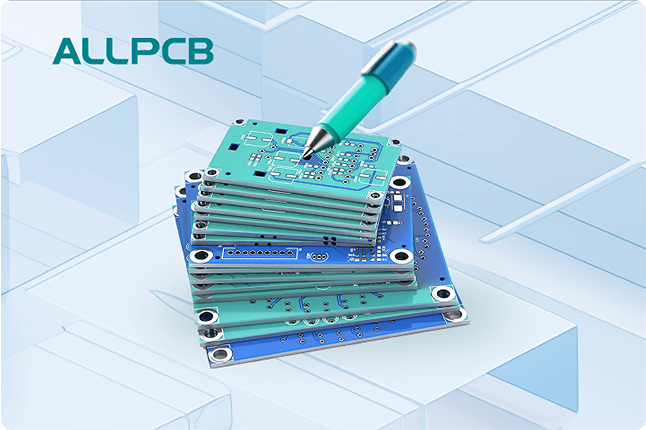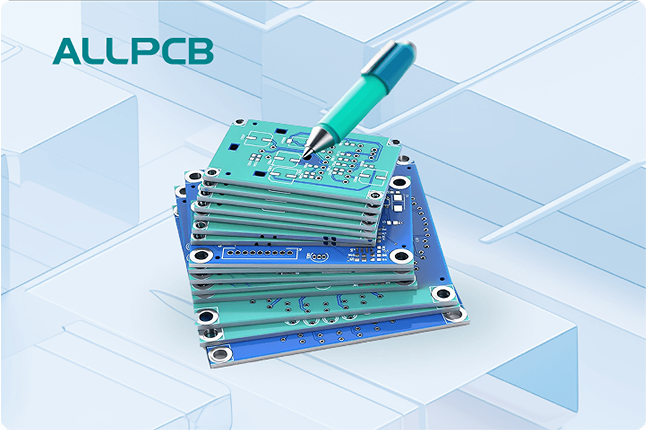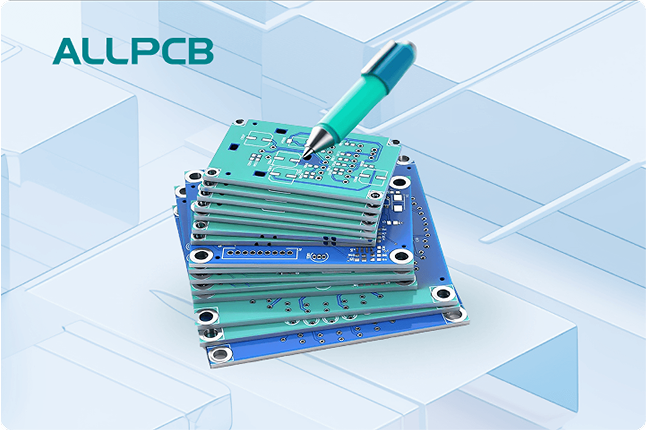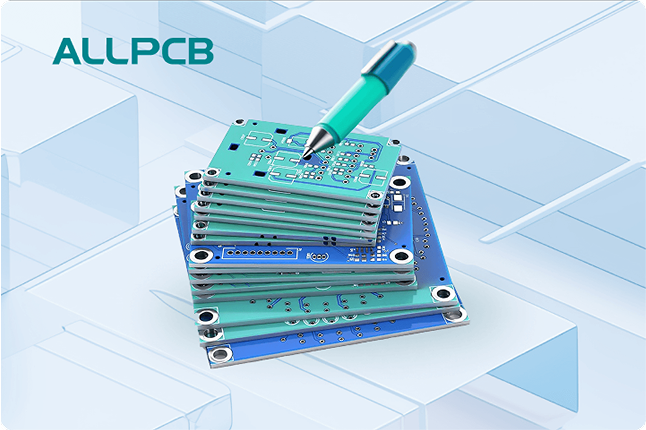In the realm of power electronics, designing a printed circuit board (PCB) stackup is a critical step to ensure optimal performance, especially for high-current applications. If you're wondering how to create a PCB stackup that handles high power, minimizes voltage drop, and manages heat effectively, the answer lies in strategic layer arrangement, material selection, and thoughtful design practices. This blog post dives deep into the essentials of PCB stackup design for power electronics, focusing on thermal management, high-current handling, and voltage drop reduction. We'll explore actionable tips and detailed insights to help engineers craft reliable and efficient designs.
Understanding PCB Stackup Design in Power Electronics
PCB stackup refers to the arrangement of layers in a printed circuit board, including conductive copper layers and insulating dielectric materials. In power electronics, where circuits often handle high currents and voltages, the stackup design directly impacts performance factors like signal integrity, thermal dissipation, and power distribution. A well-designed stackup can prevent issues such as overheating, electromagnetic interference (EMI), and excessive voltage drop, which are common challenges in high-power applications.
For engineers working on power converters, motor drives, or renewable energy systems, understanding stackup design is not just beneficial—it's essential. By optimizing the layer structure, you can ensure that your board meets the demands of high-current loads while maintaining reliability over time.
Key Factors in PCB Stackup Design for Power Electronics
Designing a PCB stackup for power electronics involves balancing several critical factors. Below, we break down the most important considerations, focusing on high-current handling, thermal management, and minimizing voltage drop.
1. Layer Arrangement for High-Current Handling
In high-current PCBs, the stackup must accommodate significant power flow without overheating or degrading. This starts with dedicating specific layers to power and ground planes. A common practice is to use inner layers for power distribution, as they can carry large currents with wider traces or full copper planes. For example, in a 4-layer board, a typical stackup might be:
- Top Layer: Signal and components
- Inner Layer 1: Ground plane
- Inner Layer 2: Power plane
- Bottom Layer: Signal or additional ground
Using thicker copper layers (e.g., 2 oz or 3 oz instead of the standard 1 oz) on power and ground planes can further support high currents. A 2 oz copper layer, for instance, can handle approximately 5-6 amps per inch of trace width at a 10°C temperature rise, based on standard current-carrying capacity charts. This helps reduce resistive losses and prevents thermal hotspots.
2. Thermal Management in Stackup Design
Thermal management is a top priority in power electronics, where components like power transistors and inductors generate significant heat. A poorly designed stackup can trap heat, leading to component failure or reduced lifespan. To address this, consider the following strategies:
- Use Thermal Vias: Place arrays of vias under heat-generating components to transfer heat from the top layer to inner or bottom layers, where it can dissipate more effectively. For example, a grid of 0.3 mm vias with 1.2 mm spacing can significantly lower thermal resistance.
- Incorporate Copper Planes: Large copper areas on power and ground layers act as heat spreaders, distributing thermal energy across the board. A solid ground plane can reduce the temperature of a power MOSFET by up to 15-20°C compared to a board without such a plane.
- Material Selection: Choose dielectric materials with high thermal conductivity, such as FR-4 with enhanced properties or specialized laminates for extreme cases. Some materials offer thermal conductivity values of 1-2 W/m·K, compared to standard FR-4 at 0.3 W/m·K.
3. Minimizing Voltage Drop in High-Current Designs
Voltage drop, often referred to as IR drop, occurs when current flows through a conductor, causing a reduction in voltage due to resistance. In power electronics, even a small voltage drop can impact performance, especially in high-current circuits. Stackup design plays a crucial role in minimizing this issue.
To reduce voltage drop, use wide traces or full copper planes for power distribution. For instance, a 100-mil-wide trace with 2 oz copper might exhibit a voltage drop of 0.05 V over a 5-inch length at 5 amps, based on standard resistance calculations (copper resistivity of 1.68 x 10^-8 Ω·m). By contrast, a full power plane can reduce this drop to nearly negligible levels due to its lower resistance.
Additionally, place power and ground planes adjacent to each other in the stackup. This configuration creates a low-inductance path, reducing parasitic effects and ensuring stable voltage delivery to components. For a 6-layer board, a recommended stackup might be:
- Top: Signal
- Layer 2: Ground
- Layer 3: Power
- Layer 4: Power
- Layer 5: Ground
- Bottom: Signal
This symmetry helps maintain consistent voltage levels across the board, even under high-current loads.
Common PCB Stackup Configurations for Power Electronics
The number of layers and their arrangement depend on the complexity and power requirements of your design. Below are some common stackup configurations tailored for power electronics, with a focus on high-current and thermal performance.
2-Layer Stackup for Simple Power Circuits
For less complex designs, a 2-layer board can suffice. Use the top layer for components and signal routing, and dedicate the bottom layer to a solid ground plane. If higher current capacity is needed, increase the copper thickness to 2 oz or more. While this setup is cost-effective, it offers limited thermal management and may not suit very high-power applications.
4-Layer Stackup for Moderate Power Needs
A 4-layer board is a popular choice for many power electronics designs. It provides dedicated layers for power and ground, improving current handling and EMI performance. As mentioned earlier, a typical arrangement prioritizes inner layers for power and ground to keep high-current paths short and efficient.
6-Layer and Above for High-Power Applications
For advanced power electronics, such as industrial inverters or high-density power supplies, a 6-layer or higher stackup is often necessary. These designs allow multiple power and ground planes, enabling better separation of analog and digital signals, improved thermal dissipation, and reduced voltage drop. The symmetrical arrangement of power and ground layers also minimizes board warpage during manufacturing.
Best Practices for Designing PCB Stackups in Power Electronics
To achieve optimal performance in high-current PCBs, follow these best practices during stackup design. These tips are derived from industry standards and practical experience in power electronics design.
- Prioritize Symmetry: Arrange layers symmetrically to avoid mechanical stress and warping. For example, in a 6-layer board, balance the number of signal and plane layers on either side of the board's center.
- Minimize Layer Spacing for Power Planes: Keep the dielectric thickness between adjacent power and ground planes small (e.g., 4-8 mils) to reduce loop inductance and improve decoupling.
- Optimize Via Placement: Use multiple vias for high-current connections to reduce resistance and improve thermal transfer. A single 0.5 mm via might handle 1-2 amps, so for a 10-amp connection, consider at least 5-6 vias in parallel.
- Simulate Before Fabrication: Use simulation tools to analyze thermal performance and voltage drop in your stackup design. Tools can predict temperature rises (e.g., a 25°C increase under load) and help you adjust the design accordingly.
- Collaborate with Manufacturers: Early communication with your PCB fabricator ensures that your stackup design aligns with manufacturing capabilities, such as achievable layer thicknesses and material availability.
Challenges in PCB Stackup Design for Power Electronics
While designing a stackup for power electronics, engineers often face several challenges. Being aware of these issues can help you plan better and avoid costly redesigns.
- Balancing Cost and Performance: More layers and thicker copper improve performance but increase manufacturing costs. For instance, moving from a 4-layer to a 6-layer board can raise costs by 30-50%, depending on specifications.
- Thermal Hotspots: Even with vias and copper planes, localized heat buildup near high-power components can be difficult to manage without advanced cooling solutions like heat sinks.
- EMI and Crosstalk: High-current switching in power electronics can generate significant EMI. Proper layer stacking (e.g., sandwiching signal layers between ground planes) is crucial to minimize interference.
Conclusion: Building Better Power Electronics with Optimized Stackup Design
PCB stackup design is a foundational aspect of creating reliable and efficient power electronics. By carefully arranging layers, selecting appropriate materials, and focusing on thermal management and voltage drop reduction, you can build high-current PCBs that perform under demanding conditions. Whether you're working on a simple 2-layer board or a complex 6-layer design, the principles discussed in this guide—layer symmetry, copper thickness, and via optimization—will help you achieve better results.
Power electronics continue to evolve, with increasing demands for efficiency and compactness. A well-thought-out stackup design not only addresses current challenges but also prepares your board for future scalability. Start applying these strategies in your next project to ensure robust performance and longevity in high-power applications.
 ALLPCB
ALLPCB







